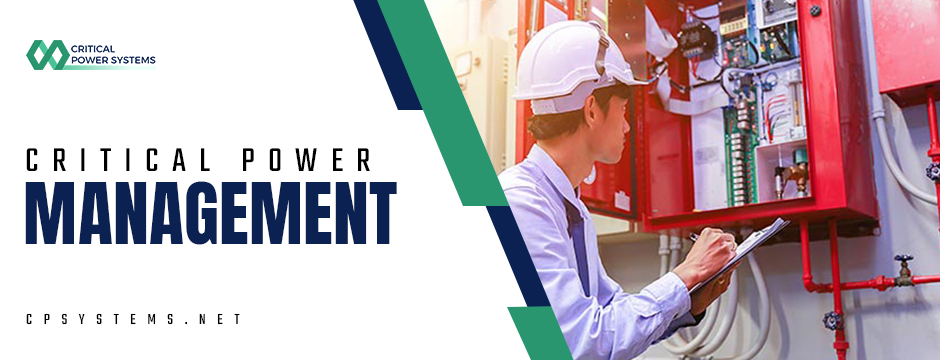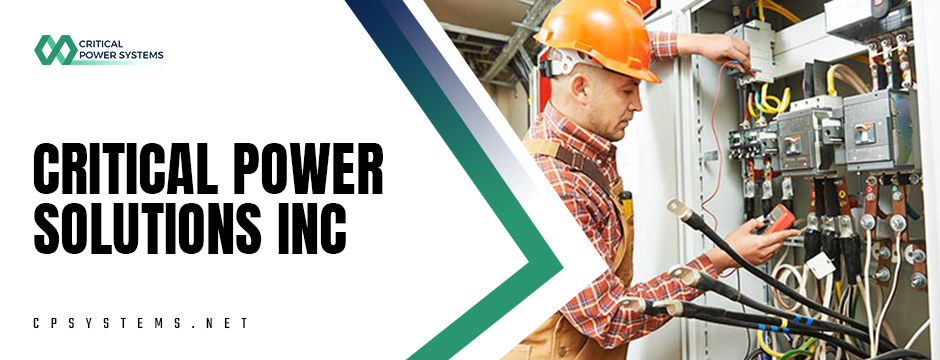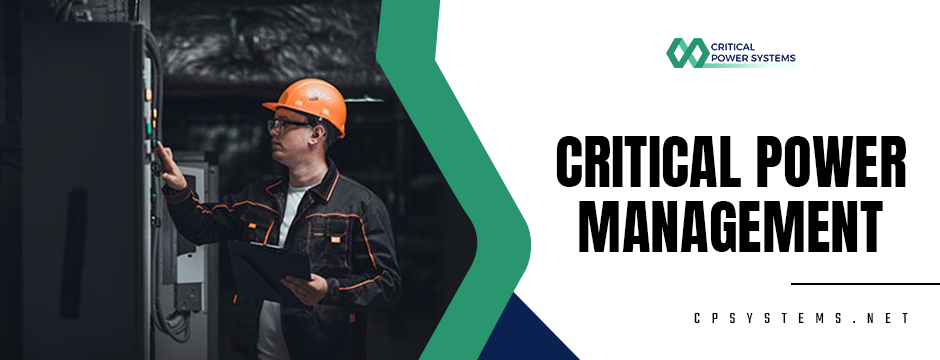In today’s digital age, data centers are the backbone of businesses, ensuring continuous access to critical applications and information. With businesses increasingly relying on digital infrastructure, maintaining maximum uptime is not just a goal—it’s a necessity. Effective critical power management plays a pivotal role in guaranteeing uninterrupted operations, making it essential for data centers to adopt best practices that optimize power systems and minimize the risk of downtime.
This comprehensive guide explores the best practices for critical power management in data centers, with a focus on redundancy design, power distribution systems, and emergency backup solutions. By implementing these strategies, data centers can achieve maximum uptime and deliver consistent performance to meet business demands.

Importance of Critical Power Management in Data Centers
Data centers house servers, networking equipment, and other critical infrastructure that require constant and reliable power. Even a brief power outage can result in data loss, business disruptions, and financial setbacks. Critical power management ensures that power delivery is uninterrupted, stable, and efficient—key factors in achieving maximum uptime.
According to recent studies, data center outages cost businesses an average of $9,000 per minute, making proactive power management a top priority. Partnering with experts like Critical Power Solutions Inc helps data centers implement robust power solutions that prevent costly disruptions.
Redundancy Design: The First Line of Defense
Redundancy is the cornerstone of critical power management in data centers. A well-designed redundancy system ensures that if one power component fails, another immediately takes over without disrupting operations.
Key Redundancy Strategies
- N+1 Redundancy: This design involves one additional power component (such as UPS or generators) for every N components required to support the load. If one unit fails, the extra component seamlessly picks up the load.
- 2N Redundancy: This setup duplicates the entire power infrastructure, providing a full backup system. While more costly, it guarantees continuous power even if the primary system completely fails.
- Distributed Redundancy: This approach uses multiple smaller power systems distributed across different locations, offering greater flexibility and fault tolerance.
Implementing redundancy not only ensures uptime but also enhances the overall resilience of the data center. Critical Power Solutions Inc specializes in designing customized redundancy systems to meet the specific needs of each facility.
Power Distribution Systems: Delivering Reliable Energy
Power distribution systems are the backbone of critical power management in data centers. These systems ensure that power is delivered consistently and efficiently to all equipment, without overloading any component.
Best Practices for Power Distribution Systems
- Centralized Power Distribution Units (PDUs): Use high-quality PDUs to distribute power from the main source to individual servers and equipment, with built-in monitoring capabilities.
- Branch Circuit Monitoring: Continuously monitor branch circuits to detect overloads, power imbalances, or other anomalies that could lead to failures.
- Dual Power Feeds: Equip critical servers and devices with dual power feeds connected to separate power distribution systems for added reliability.
- Isolated Grounding Systems: Prevent ground loops and electrical noise by implementing isolated grounding systems, which protect sensitive equipment from power disturbances.
By adopting these best practices, data centers can optimize power distribution efficiency while minimizing the risk of unexpected failures.
Emergency Backup Solutions: Power When It Matters Most
No critical power management strategy is complete without comprehensive emergency backup solutions. In the event of a power outage, these systems kick in immediately to maintain uninterrupted operations.
Essential Backup Solutions
- Uninterruptible Power Supply (UPS) Systems: UPS systems provide short-term battery backup power, allowing critical equipment to continue running while generators start up or power is restored.
- Backup Generators: Diesel or natural gas generators supply long-term backup power during extended outages, ensuring data center operations remain unaffected.
- Automatic Transfer Switches (ATS): ATS devices automatically switch between primary and backup power sources, eliminating manual intervention during power failures.
- Battery Monitoring Systems: Regularly monitor UPS batteries to detect degradation and replace failing batteries before they cause downtime.
With the right backup solutions in place, data centers can weather unexpected power outages without compromising performance or data integrity.
Monitoring and Maintenance: Ensuring Long-Term Reliability
Even the most sophisticated critical power management systems require ongoing monitoring and maintenance to ensure long-term reliability. Regular inspections, software updates, and testing are essential to identify potential issues before they escalate.
Recommended Practices
- Implement remote monitoring systems to track power usage, battery health, and system performance in real-time.
- Schedule regular maintenance checks for UPS systems, generators, and PDUs.
- Conduct load testing and battery runtime tests to verify backup power capacity.
- Partner with Critical Power Solutions Inc for 24/7 emergency support and proactive maintenance services.

Conclusion: Achieve Maximum Uptime with Critical Power Systems
In the fast-paced digital landscape, data centers must prioritize critical power management to achieve maximum uptime and operational efficiency. By implementing redundancy designs, optimizing power distribution systems, and investing in reliable emergency backup solutions, businesses can safeguard their critical infrastructure from power disruptions.
Partnering with trusted providers like Critical Power Solutions Inc and Critical Power Systems ensures that data centers have access to cutting-edge technologies, expert support, and customized solutions tailored to their unique needs.
Whether you’re upgrading your existing power infrastructure or designing a new data center, the right critical power management strategy is the key to delivering uninterrupted service and business continuity.
For more information on how Critical Power Systems can help your data center maximize uptime, contact our team today.
FAQs on Critical Power Management in Data Centers
1. What is critical power management in data centers?
Critical power management involves designing, monitoring, and maintaining power systems to ensure uninterrupted power supply in data centers.
2. Why is redundancy design important in data centers?
Redundancy design ensures that backup systems are in place to take over in case of primary power system failure, minimizing downtime risks.
3. How does a UPS system work in data centers?
A UPS system provides short-term backup power during outages, allowing seamless transition to longer backup solutions like generators.
4. What are the benefits of dual power feeds in data centers?
Dual power feeds enhance power reliability by supplying power from two independent sources, reducing the risk of complete power failure.
5. How can Critical Power Solutions Inc help with power management?
Critical Power Solutions Inc offers comprehensive critical power management solutions, including redundancy design, power distribution, and emergency backup systems.

